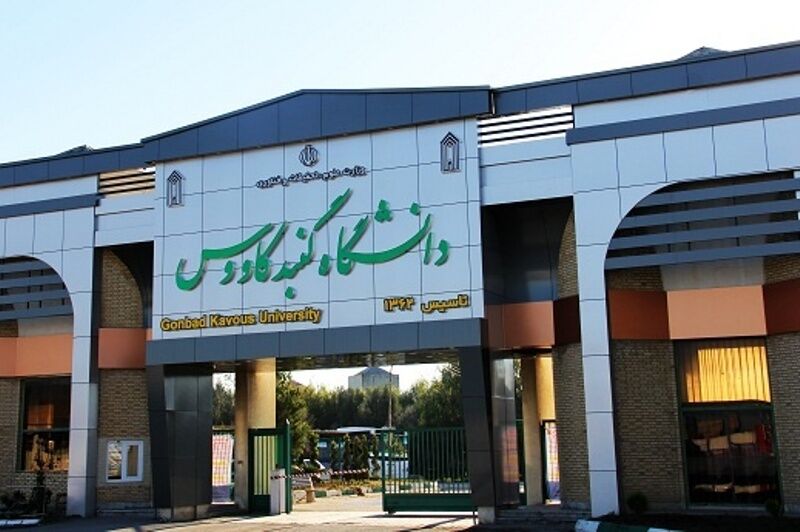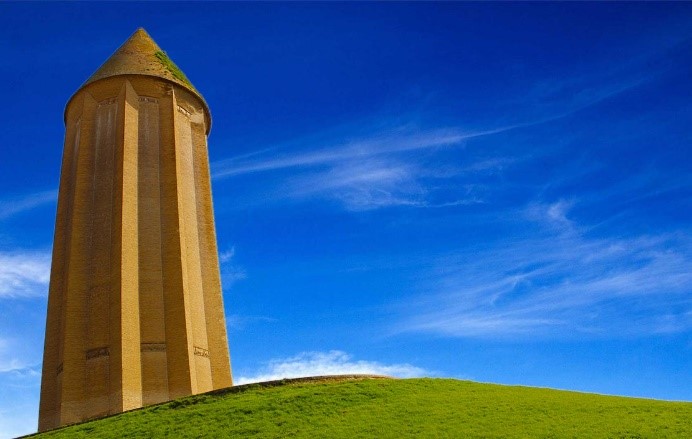
Gonbad Kavous is a city located in the northern and central part of Golestan province (55 degrees, 18 minutes of longitude and also 37 degrees, 17 minutes of latitude). It is bordered with Turkmenistan, a country in its norther part, Azadshahr and Ramian, two towns in its southern parts, Maravetepe, Kalaleh, Galikesh and Minodasht, some towns in its eastern part, and Aqqola, a town in its western part.
The area of the city is 5071.32 square kilometers and its population is 360,000 people. This city is the largest one in terms of its size and the second in terms of its population in Golestan province. Most of the residents of Gonbad Kavous are Iranian Turkmen. The rest of the population of this city consists of Persian speakers and its immigrants are from other regions such as Azerbaijan, Khorasan, Semnan and Sistan and Baluchistan.
This city is named Gonbad Kavous or Gonbad Qabus because of the existene of the tallest brick tower in the world. It was also recorded as a historical and Iranian art work in UNESCO in 2013. This tower was built in the year 397 AH by the order of Emir Shams-ul-Maali Qaboos bin Vashamgir Ziyari, who was a noble man, a scholar, a lover of literature and a poet, and with a thousand-year old age. It has remained standing and strong like its people.
In terms of its historical background, Verkan, Hyrkan, Hyrkaniyeh and Gorgan are the names that were applied to this land in pre-Islam era. After Islam, It was called Jorjan. It was named Qabous Tower from Timurid dynasty. Notably, it has been called Gonbad Kavous since 1906. Based on archaeologists, the remaining historical monuments of the history of civilization and development of this region go back to six thousands years ago.
Jorjan is one of the old cities. In 98 A.H, Yazid bin Sahlab Arab captured this city and damaged it during the war although it was reconstructed later. However, due to the invasion of the Timurids and the Mongols, its grandeur and prosperity was lost.
In addition to the city of Jorjan, the defensive wall of Gorgan (Iskander) which is related to the Sassanid dynasty is one of the historical and valuable monuments that passes through the northern and northeastern part of the city. Of other historical and religious monuments of this city is the shrine of Imamzadeh Yahya bin Zayd, the grandson of Imam Zayn al-Abdin, the forth Imam in Shiat. It is a large building and a wide area and a mirrored portico.
One of the valuable historical works of this pilgrimage site is the presence of the altar and the plastering done during the Seljuk dynasty near the sacred shrine of that imam, and this tomb is near the historical city of Jorjan, in the southwest of the current city of Gonbad Kavus. The main map of this city was designed by German experts in accordance with the principles of urban planning.
It includes crossed streets with a checkered pattern without narrow and old passages. Gonbad Kavous is one of the first cities in Iran municipality of which has a long history. Today, this city is considered one of the beautiful and scenic cities of Golestan province. It has a mild and humid climate and its annual rainfall is about 500 mm. One of the unique features of this city is the beautiful coexistence of different ethnic groups living in it.
Of the places of interest in Gonbad Kavus city are the brick tower of Gonbad Qaboos, Equestrian Complex, Great Wall of Gorgan (Iskander), ancient city of Jorjan, Inchebron border market, Imamzadeh Yahya bin Zaid, Russian Bazaar, artificial lake, Golestan Dam, Alagol Wetland, Almagol Wetland. He named Ajigol and Agtepe wetlands.

Located in the historical city of Gonbad Kavous, Gonbad Kavous University (GKU) is the major higher education university in the eastern part of Golestan Province, Iran. Officially accredited/recognized by the Ministry of Science Research and Technology in Iran, the University is a public and coeducational higher education institution and it offers courses and programs leading to officially recognized higher education degrees such as bachelor, Master and Ph.D. degrees in several areas of study. Gonbad Kavous University also provides several academic and non-academic facilities and services to students including a library, as well as administrative services.
GKU was formerly known as Gonbad Kavous Agricultural School, starting its activity in 1983 as one of the campuses dependent on Mazandaran University with two fields of study in associate degree. With increasing the number of fields of study and upgrading the school to a faculty dependent on Gorgan University of Agricultural Sciences and Natural Resources, it kept on its activity until 1996.
Coinciding with the second provincial visit of at-the-time president to Golestan province in 2007, it was seperated from the Gorgan University of Agricultural Sciences and Natural Resources and it started as an independent higher education institution its activities with 3 faculties (Agriculture and natural resources, basic and engineering sciences, humanities and sports sciences) and 25 fields of study in Master, B.A/B.S and associate degree and 2500 students at the same year. With the announcement of the honorable deputy minister in the Ministry of Science, Research and Technology (MSRT), from the beginning of May 2013, the college was promoted from a higher education institution to Gonbad Kavous University.
With the establishment of Technical Engineering College in 2009 in Minodasht and Faculty of Humanities (only for females) in 2011 in Azadshahr, it has been continuing its activities.
Gonbad Kavous University with 5 faculties, more than 3600 students, 68 fields of study in all academic levels such as Doctor of Phiosophy (Ph. D), M.A and M.S, B.A and B.S and associate degree, 136 full-time faculty members, well-equipped and advanced laboratories, on-campus dormitories, numerous sports courts and artificial grass fields is undoubtedly one of the most important centers of higher education among the universities of the country. It is also the largest center of higher education in the east of Golestan province.
The faculty members and researchers of this university have played a valuable role in the scientific development of the country and the region by implementing numerous research projects at international, national and regional levels in the fields of Watershed Management, Horticulture, Desert Management, Rangelands Management and Agriculture.
Officials, faculty members and employees of this university hope that under the auspices of the Islamic Republic, educational, research, cultural and social macro policies of the of the Ministry of Science and Research and Technology (MSRT) will play an effective and constructive role in preparing the next generation as well as the production of science. The honor and pride of Iran is the wish of all of us.